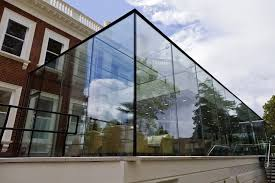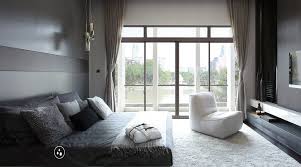How to Choose Between Structural Glazing and Curtain Wall Systems

In today’s world of modern architecture, glass façades symbolize innovation, sophistication, and transparency. They allow buildings to look sleek and elegant while maximizing natural daylight. When designing or renovating a commercial or residential property, many architects and developers face a common dilemma — should you choose structural glazing or curtain wall systems? To better understand their differences and decide which is right for your project, you can explore a detailed comparison at Structural Glazing vs Curtain Wall.
Understanding Structural Glazing
Structural glazing is an advanced glass façade system that uses high-performance silicone sealants to attach glass panels directly to the building’s structural framework, eliminating the need for visible mechanical fasteners or aluminum mullions. This creates a smooth, uninterrupted glass surface that embodies modern minimalism.
Key Characteristics of Structural Glazing
Seamless Appearance: Offers a sleek, continuous exterior with no visible framing lines.
High-Strength Silicone Bonding: Specialized silicone adhesives provide strength, flexibility, and weather resistance.
Energy Efficiency: Reduces thermal bridging and improves insulation.
Maximum Daylight: Allows abundant natural light, enhancing indoor spaces.
Architectural Freedom: Suitable for creative, curved, or slanted façade designs.
Applications
Structural glazing is widely used in:
Corporate buildings and high-end offices
Shopping complexes and airports
Hotels, showrooms, and luxury residences
Skylights, atriums, and feature façades
Its aesthetic elegance and modern appearance make it the go-to choice for projects focused on visual impact.
Understanding Curtain Wall Systems
A curtain wall system is a non-load-bearing structure that forms a building’s outer covering. It typically consists of aluminum frames filled with glass, stone, or metal panels. Unlike structural glazing, curtain walls are built as panelized sections attached to the building’s frame, transferring only their own weight and environmental loads.
Key Characteristics of Curtain Walls
Aluminum Framework: A visible grid of mullions supports the glass panels.
Prefabricated Modules: Panels are assembled off-site for efficient on-site installation.
Weather and Wind Resistance: Designed to protect against air infiltration, water leaks, and temperature shifts.
Ease of Maintenance: Damaged panels can be replaced individually.
Enhanced Insulation: Offers improved thermal and acoustic performance.
Applications
Curtain walls are ideal for:
High-rise towers and commercial complexes
Shopping malls and public institutions
Office buildings, universities, and hotels
They combine structural performance, durability, and clean aesthetics, making them highly practical for long-term use.
Structural Glazing vs Curtain Wall: Key Differences
Though they may appear similar from the outside, structural glazing and curtain walls have distinct differences that affect design, performance, and cost.
| Feature | Structural Glazing | Curtain Wall System |
| Aesthetic Design | Seamless, frameless look | Framed panels with visible mullions |
| Support System | Glass bonded with silicone | Aluminum frame supports glass |
| Installation | More complex, requires skilled labor | Modular and easier to install |
| Maintenance | Requires specialists | Easier to repair or replace |
| Weather Resistance | Excellent with proper sealing | High performance under extreme weather |
| Energy Efficiency | Superior due to minimal metal usage | Depends on thermal breaks and glass type |
| Cost | Typically higher for bespoke projects | More cost-effective for large-scale use |
Choosing the Right System for Your Project
Selecting between structural glazing and curtain wall systems depends on your project’s design goals, budget, and performance expectations.
Choose Structural Glazing if your priority is a clean, uninterrupted façade that offers premium aesthetics and energy efficiency.
Choose Curtain Wall Systems if you prefer modular flexibility, faster installation, and easier maintenance.
For projects requiring both visual appeal and technical performance, some architects combine both systems strategically — using structural glazing for feature areas and curtain walls for larger elevations.
Key Considerations Before Deciding
When planning your building’s façade, keep these essential factors in mind:
Budget: Consider the upfront cost versus long-term maintenance.
Building Height and Wind Load: Structural requirements affect system choice.
Climate Conditions: Weather resistance and insulation vary by system.
Aesthetic Goals: Decide whether you want visible framing or a smooth glass finish.
Maintenance Accessibility: Plan for easy replacement or cleaning access.
A professional façade consultant or architectural glass expert can help you assess the ideal system for your structure.
Final Thoughts
Both structural glazing and curtain wall systems represent the pinnacle of contemporary architectural design. Each offers unique benefits — from the seamless beauty of structural glazing to the practicality and strength of curtain wall systems. The right choice depends on your building’s purpose, performance requirements, and desired aesthetic.





